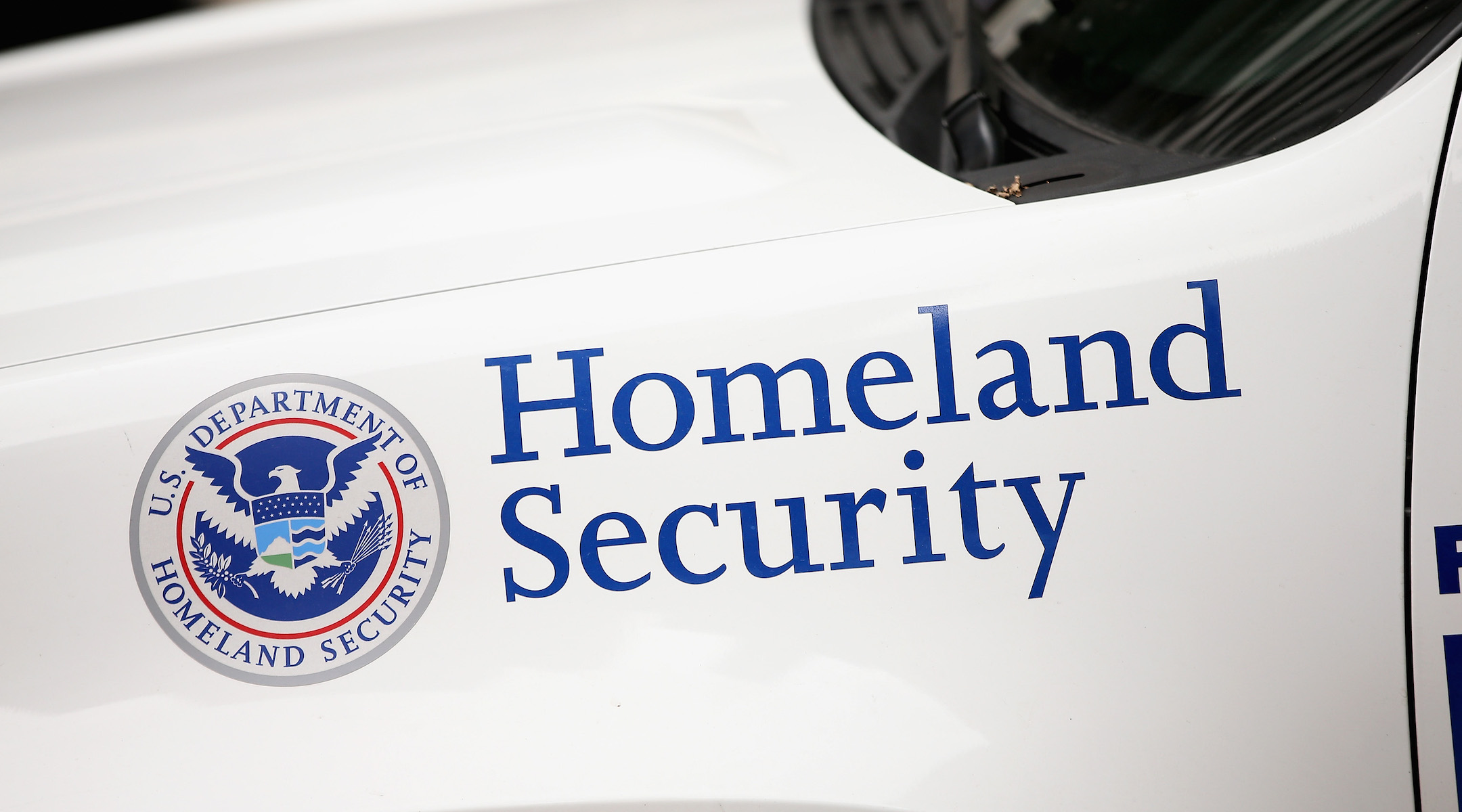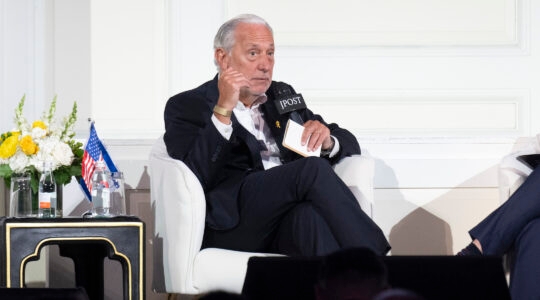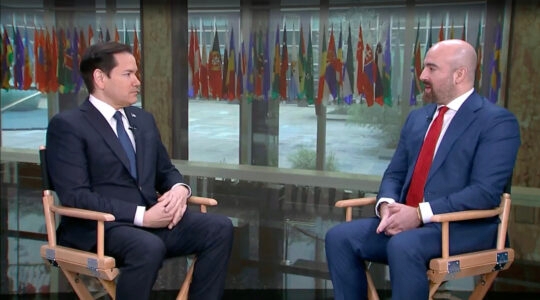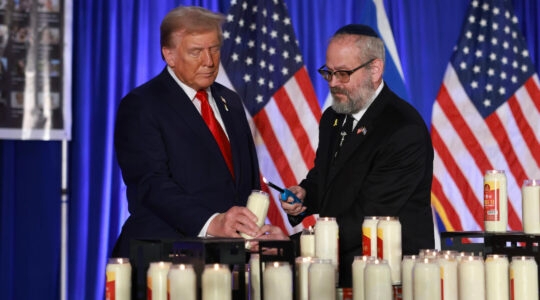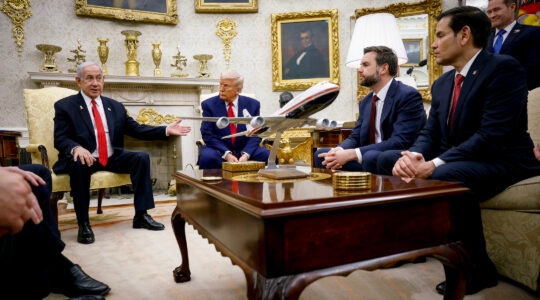WASHINGTON (JTA) — At first, it reads like a grim joke: Less than six months after the worst attack on Jews in U.S. history, the Trump administration took the bold decision to … shut down a unit tracking domestic terrorism.
Dig a little, however, and it’s a more complicated picture. The good news is that there are existing government agencies tracking domestic terrorism and particularly white supremacists, like the man who allegedly shot dead 11 Jewish worshippers in Pittsburgh in October.
The bad news, say some experts, is that the way the government, and particularly the Trump administration, tracks anti-Semitism is a mess, with or without the dedicated unit inside the Department of Homeland Security that just got disbanded.
Here are some questions about the move and its implications.
What happened?
The Daily Beast reported this week that the Department of Homeland Security shut down the domestic terrorism analysis unit within its Office of Intelligence and Analysis.
The analysts compiled and shared information on homegrown extremists with state and local law enforcement agencies, and with possible targets. Those targets include Jewish groups that handle security, like the Anti-Defamation League and the Secure Community Network, a group affiliated with the Jewish Federations of North America and the Conference of Presidents of Major American Jewish Organizations.
DHS in a lengthy statement to the Daily Beast said that the changes will make the tracking of potential domestic terrorists, and the sharing of information, more efficient and that the tracking had, in fact, increased recently.
“The idea presented by some that we have cut our commitment to defeating all forms of radical ideology — including white supremacist and domestic terrorist — is patently false and the exact opposite of what we have done,” said David Glawe, the recently installed chief of Intelligence and Analysis.
Less clear was exactly how the change would lead to enhanced information sharing. Steve Pomerantz, a former FBI agent who is now the director of counterterrorism programs at the Jewish Institute for National Security Affairs, said it would make more sense to devolve the intelligence analysis and sharing to the FBI, which institutionally had greater experience in tracking domestic threats. DHS, he said, was better suited to ensuring that ports of entry were secure.
“When you talk about intelligence gathering in domestic terrorism, analysis of intelligence gathering, that is the FBI’s responsibility, they are the principal agency to combat terrorism, whether it is international terrorism that presents itself in the U.S., or domestic terrorism,” he said. “It’s hard for me to understand the value added of DHS in terms of domestic terrorism.”
What do DHS’s Jewish clients think of this?
The two clients, SCN and ADL had radically different takes.
Jonathan Greenblatt, the ADL’s CEO. said the move “defies logic.” He took direct aim at the Trump administration, citing what he depicted as its muted responses not only to the Pittsburgh massacre but to the deadly neo-Nazi march in Charlottesville, Virginia in August 2017, and to the mass killing of 50 Muslims in New Zealand this year, carried out by a white supremacist.
“The current administration has been chipping away at our nation’s ability to address a deadly serious national security threat: right-wing extremism,” Greenblatt said in a statement. “To simply disregard this threat, especially after what we witnessed in Pittsburgh, Charlottesville, Charleston, and even overseas in Christchurch, New Zealand could put lives at risk.”
He called for greater congressional oversight of domestic terrorism tracking.
Michael Masters, who directs SCN (which works closely with ADL in tracking threats), said that DHS’s argument that the move would increase efficiency was persuasive.
“I have been assured by DHS that the changes they have made will lead to better information-sharing and coordination between law enforcement partners, notably between DHS and the FBI,” he said in an email. “In this, it is my understanding that the changes were designed to not only improve the sharing of information but increase the likelihood that domestic terrorist events were stopped.”
What is it the ADL worried about?
Ryan Greer, the ADL’s director for program assessment and strategy, said the mission of tracking domestic terrorists would be diluted without a dedicated team.

(Ari Perilstein/Getty Images)
“What they are saying is that other people who cover a range of issues, airline security, cybersecurity, maybe sometimes they will deal with domestic terrorism,” said Greer, who worked in senior anti-terrorism positions in the Obama administration’s State Department and Department of Homeland Security. “To say that the same person who will be focused on baggage handling policy or traffic control will have the same focus” as the disbanded team “is simply laughable.”
A properly functioning dedicated team would notice, for instance, that the alleged Pittsburgh attacker and the confessed New Zealand killer were in the same online forums, being radicalized by the same propaganda, Greer said.
John Cohen, a senior adviser at Rutgers University’s Institute for Emergency Preparedness and Homeland Security, said in an interview that he was sure that DHS would pass on tips of pending attacks. But he was concerned that the DHS clients, including local law enforcement and faith-based groups, could miss a bigger picture now that a dedicated team was not compiling reports.
“There’s no doubt DHS will share information on potential attacks,” he said. “What I’m more concerned about is whether faith-based organizations and others getting more strategic analysis that allows them to understand the threat environment and take steps to secure communities and congregations.”
So we’re losing an important means of tracking the rise of white supremacists?
This is where it gets really complicated. Whether white supremacy is on the rise depends on how you assess it — and whether DHS tracking has been any help at all is also an open question.
JINSA’s Pomerantz says that the threat from white supremacists was more lethal when he was at the FBI in the 1980s and 1990s, noting the 1984 assassination of Jewish talk show host Alan Berg, attacks on synagogues and the existence of The Order, an armed white supremacist militia. Pomerantz said he believed the more imminent threat was from radical Islamists, who he said are organized and control territory overseas in a way that white supremacists do not.
The ADL released a study, however, noting that “extremist-related murders in 2018 were overwhelmingly linked to right-wing extremists.”
“Largely absent from this list of killers were extremists motivated by radical interpretations of Islam,” Greenblatt wrote in an op-ed for the Jewish Telegraphic Agency. “Only one of the 50 murders had any connection to Islamist extremism — and even then the perpetrator had ties to white supremacy. In 2018, the U.S. was thankfully spared the mass murders by Islamist extremists we’ve seen in recent years.”
Michael German, a fellow at the Brennan Center for Justice, agreed that white supremacists were better organized a generation ago, when he was working for the FBI undercover and infiltrating white supremacist groups. He cited one of the worst terrorist attacks on U.S. soil, the 1995 bombing of a federal building in Oklahoma City.
But German, an expert on extremism, said that law enforcement tracking of white supremacists was also hampered structurally. Law enforcement staffing tends to be overwhelmingly white, and officials historically have been likelier to play down the threat from the communities with which they are familiar.
“White people who go to work and then come home to a safe white neighborhood don’t worry about white supremacists attacking them or their families,” he said. German routinely reviews the reports from DHS and other agencies and said that reports on potential violence from non-white supremacist groups tended to be more alarmist, if only because the reporters were less familiar with the communities.
“It’s not surprising to see police coming out in riot gear” to face a Black Lives Matter protest “when they read in their intelligence briefings that there’s a movement of black extremists trying to kill them.”
So is the fight against extremism of all types being politicized?
Another factor inhibiting reporting on white supremacists was the Obama administration’s botched rollout of a report on “right-wing extremism.” Republicans objected to the term “right wing” and veterans’ groups objected to its reporting that extremists would likely target young veterans returning from overseas. German said that controversy led DHS officials to become wary when tracking white supremacists.
Compounding the institutional reluctance to track white-supremacist extremism, German said, is an administration that has downplayed and in some cases appeared to encourage white supremacists. When asked after the New Zealand attack whether white nationalists were a growing threat around the world, Trump replied: “I don’t really. I think it’s a small group of people that have very, very serious problems. It’s certainly a terrible thing.”
After the Charlottesville violence, Trump initially blamed both sides for the violence, a day later condemned the Ku Klux Klan and neo-Nazis, and a day after that said there were “some very fine people” on both sides of a clash that pitted anti-fascist protesters against white power marchers who had chanted “Jews will not replace us.”
Greer agreed that the White House and other politicians set priorities through their rhetoric and actions. “There is an overall trend of politicians mainstreaming hate,” he said, noting that Trump plays up threats from the Islamic State, while downplaying threats from white supremacists, although both organize similarly, through online recruiting.
More insidiously, German said, law enforcement is susceptible to a white supremacist tactic of provoking violence, and then depicting it as the fault of the leftist counterprotesters, noting that was how police initially treated the 2017 Charlottesville violence, a riot in Sacramento in 2016, and a rally in New York last year by the far-right Proud Boys group.
“What the supremacists are doing at these rallies is a tactic they’ve used for generations,” he said. “The idea is to have a large public event for the purpose of attracting protesters so they can attack them.”
JTA has documented Jewish history in real-time for over a century. Keep our journalism strong by joining us in supporting independent, award-winning reporting.
